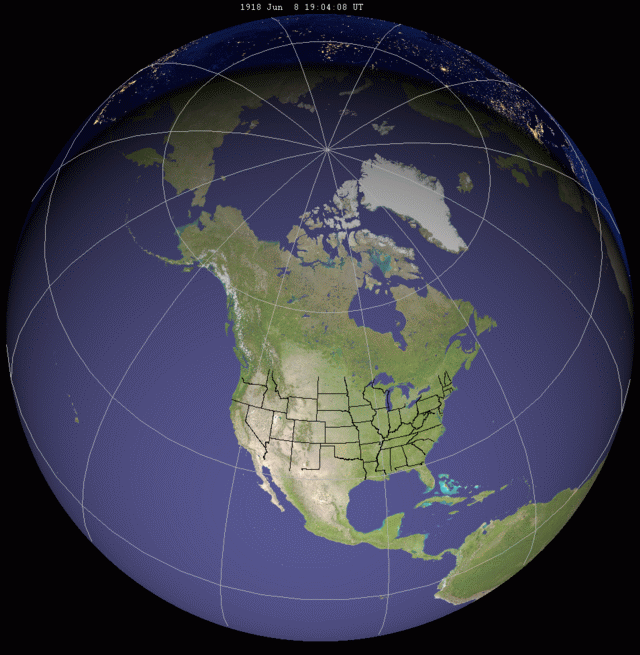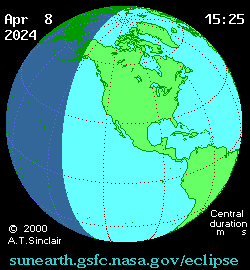|
American Eclipse (USA)
{{disambig ...
American Eclipse or Great American Eclipse may refer to: * ''American Eclipse'' (book), the 2017 book about the 1878 solar eclipse by David Baron * American Eclipse (racehorse), a 19th-century racehorse * Solar eclipse of June 8, 1918, "Great American Eclipse", a total solar eclipse seen widely across the contiguous United States * Solar eclipse of August 21, 2017, "Great American Eclipse", a total solar eclipse seen widely across the contiguous United States *Solar eclipse of October 14, 2023 * Solar eclipse of April 8, 2024, "Great North American Eclipse" See also * List of solar eclipses visible from the United States This is an incomplete list of solar eclipses visible from the United States between 1001 and 3000. All eclipses whose path of Solar_eclipse#Types, totality or annularity passes through the land territory of the current fifty U.S. states are inclu ... [...More Info...] [...Related Items...] OR: [Wikipedia] [Google] [Baidu] |
American Eclipse (book)
''American Eclipse: A Nation's Epic Race to Catch the Shadow of the Moon and Win the Glory of the World'' is a non-fiction book by journalist David Baron, published by Liveright in 2017, about the popular impression of the 1878 solar eclipse as observed across the United States. It won the American Institute of Physics Science Writing Award in 2018. Background Baron was inspired to write the book after viewing his first total solar eclipse in Aruba in 1998. He decided that he would publish it in 2017 in order to coincide with the solar eclipse of August 21, 2017. Synopsis ''American Eclipse'' follows three scientists, James Craig Watson, Maria Mitchell, and Thomas Edison as they traveled to view the total solar eclipse on July 29, 1878. Reception ''Kirkus Reviews'' described ''American Eclipse'' as a "compelling... timely, energetic combination of social and scientific history." Graham Ambrose, writing for ''The Denver Post'', lauded Baron's social history of a scienti ... [...More Info...] [...Related Items...] OR: [Wikipedia] [Google] [Baidu] |
American Eclipse (racehorse)
American Eclipse (1814–1847) was an undefeated American Thoroughbred racehorse, who raced when three- to four-mile heats were common. Breeding American Eclipse was bred on Long Island, New York by General Nathaniel Coles. He was by Duroc (by the founding stallion Diomed), out of Miller's Damsel (known as the "Queen of the Northern Turf," by Messenger). Miller’s Damsel’s dam was a mare (foaled in 1792) by Pot8os, who was by the original Eclipse. The horse was a chestnut stallion that stood 15 hands 1 inch high and was named after the great English champion Eclipse. The original Eclipse (1764 to 1789), about whom it was said: "Eclipse first—the rest nowhere," was so outstanding that many people named their horses Eclipse in the hope that they had another horse of his quality. Racing record Coles didn't start American Eclipse until he was a three-year-old, and then he raced him sparingly. He had a few race starts at four and was victorious each time. He was, according ... [...More Info...] [...Related Items...] OR: [Wikipedia] [Google] [Baidu] |
Solar Eclipse Of June 8, 1918
A total solar eclipse occurred on Saturday, June 8, 1918. The eclipse was viewable across the entire contiguous United States, an event which would not occur again until the solar eclipse of August, 2017. The path The path of totality started south of Japan, went across the Pacific Ocean, passing northern part of Kitadaitō, Okinawa and the whole Tori-shima in Izu Islands on June 9 (Sunday), and then acrossed the contiguous United States and British Bahamas (today's Bahamas) on June 8 (Saturday). The largest city to see totality was Denver, although many could theoretically see it as the size of the shadow was between across as it traveled across America. The longest duration of totality was in the Pacific at a point south of Alaska. The path of the eclipse finished near Bermuda. Besides the path where a total solar eclipse was visible, a partial solar eclipse was visible in the eastern part of East Asia, northern part of Northern Europe, eastern part of Micronesia, Hawaii I ... [...More Info...] [...Related Items...] OR: [Wikipedia] [Google] [Baidu] |
Solar Eclipse Of August 21, 2017
The solar eclipse of August 21, 2017, dubbed the "Great American Eclipse" by the media, was a total solar eclipse visible within a band that spanned the contiguous United States from the Pacific to the Atlantic coasts. It was also visible as a partial solar eclipse from as far north as Nunavut in northern Canada to as far south as northern South America. In northwestern Europe and Africa, it was partially visible in the late evening. In northeastern Asia, it was partially visible at sunrise. Prior to this event, no solar eclipse had been visible across the entirety of the United States since June 8, 1918; not since the February 1979 eclipse had a total eclipse been visible from anywhere in the mainland United States. The path of totality touched 14 states, and the rest of the U.S. had a partial eclipse. The area of the path of totality was about 16 percent of the area of the United States, with most of this area over the ocean, not land. The event's shadow began to cover land ... [...More Info...] [...Related Items...] OR: [Wikipedia] [Google] [Baidu] |
Solar Eclipse Of October 14, 2023
An annular solar eclipse will occur on Saturday, October 14, 2023. A solar eclipse occurs when the Moon passes between Earth and the Sun, thereby totally or partly obscuring the image of the Sun for a viewer on Earth. An annular solar eclipse occurs when the Moon's apparent diameter is smaller than the Sun's, blocking most of the Sun's light and causing the Sun to look like an Annulus (mathematics), annulus (ring). An annular eclipse appears as a partial eclipse over a region of the Earth thousands of kilometres or miles wide. This will be the second annular eclipse visible from Albuquerque, New Mexico, Albuquerque in 11 years, where it crosses the path of the Solar eclipse of May 20, 2012, May 2012 eclipse. Occurring only 4.6 days after apogee (Apogee on October 10, 2023), the moon's apparent diameter will be smaller. It also coincides with the last day of the Albuquerque International Balloon Fiesta, Albuquerque Balloon Fiesta. Future total solar eclipses will cross the United ... [...More Info...] [...Related Items...] OR: [Wikipedia] [Google] [Baidu] |
Solar Eclipse Of April 8, 2024
A total solar eclipse will take place at the Moon's ascending node on Monday, April 8, 2024, visible across North America and dubbed the Great North American Eclipse (also Great American Total Solar Eclipse and Great American Eclipse) by some of the media. A solar eclipse occurs when the Moon passes between Earth and the Sun, thereby obscuring the image of the Sun for a viewer on Earth. A total solar eclipse occurs when the Moon's apparent diameter is larger than the Sun's, blocking all direct sunlight, turning day into darkness. Totality occurs in a narrow path across Earth's surface, with the partial solar eclipse visible over a surrounding region thousands of kilometres wide. Occurring only one day after perigee (perigee on April 7, 2024), the Moon's apparent diameter will be larger than usual. With a magnitude of 1.0566, its longest duration of totality will be of four minutes and 28.13 seconds near the town of Nazas, Durango, Mexico (~6 km north), and the nearby city of T ... [...More Info...] [...Related Items...] OR: [Wikipedia] [Google] [Baidu] |


